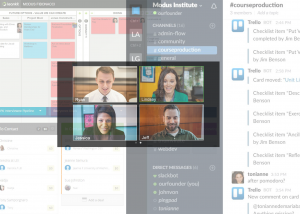The notion of a successful distributed team seems like a wonderful, yet unobtainable dream. But stop and think, how often are your non-distributed teams successful? When have they been successful and why?

It’s never because of your plan or because you hired the best people. It’s not because you got expensive new project management software. It’s not even because you had executive buy-in and freedom to make your own decisions.
Successful teams have only resulted from one key ingredient: clarity.
People need to know what work is being done by whom, what their own roles are, when to ask for help or provide information, what decisions they can safely make on their own, what is being completed (imagine, seeing progress makes you successful!), and knowing the people they are working with.
For a distributed team, this is hard to achieve and maintain because team members exposure to each other is often limited (if non-existent). They not only begin to feel isolated, but they spend a lot of their energy either acting in good faith in a way that doesn’t help the team or wondering how they should be acting. Trust begins to erode when meetings focus on what is going wrong rather than what is happening in the project as a whole. These lead to a loss of alignment, as people try to figure what is really going on and speculate as to why breakdowns are occurring.
It’s not long before your distributed team becomes distributed silos.
Distributed systems have weaker links between their components (the team members). Russell Ackoff defined a system as “the interactions between the components.” If we have weak links, we have a weak system.
To avoid this, teams must constantly be aware of:
- Roles: What things that need to be done are being done and by whom (not job descriptions, but actual roles). These can be shared or individual.
- Boundaries: When does an action by me require talking to you?
- The Product: Goals, status, and customer.
- What is in Flight: We can’t collaborate if we are working in distributed silos. Team members must know in real-time who is working on what, when they are stuck, and when they have successfully completed their tasks.
- Collaboration Opportunities: As often as possible, team members need to work together to complete tasks. This builds rapport (very important) and strengthens communications between distributed team members.
When you add these elements together, both team members and the project benefit from greatly increased clarity. People know what is being done for whom, and why. They know what’s being completed so they can interpret breakdowns in the context of overall success. Best of all, accountability, which people spend way too much time worrying about, will be evident in completed work by the team as a whole (no longer any need to come up with productivity metrics or other morale-destroying systems).
All teams, distributed or co-located, will benefit from this clarity and collaboration. We’ve all seen it. Any team you’ve been on that’s been successful has likely known what their mission was, what their role was, and had the information and authority to act.
These elements are explored in depth in Modus Institute’s Successful Distributed Teams class.
